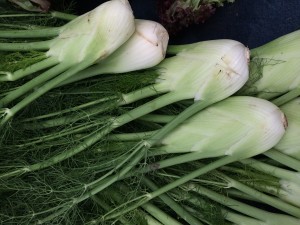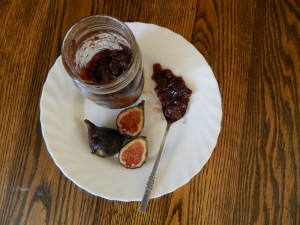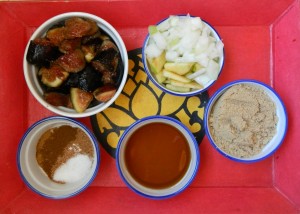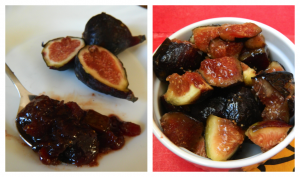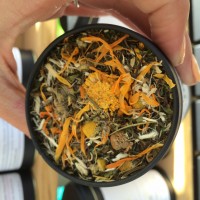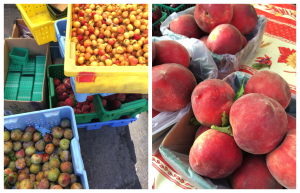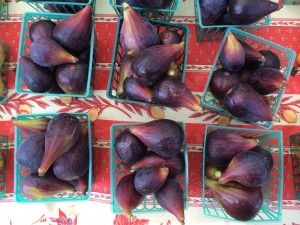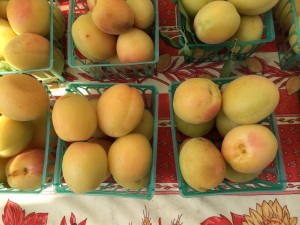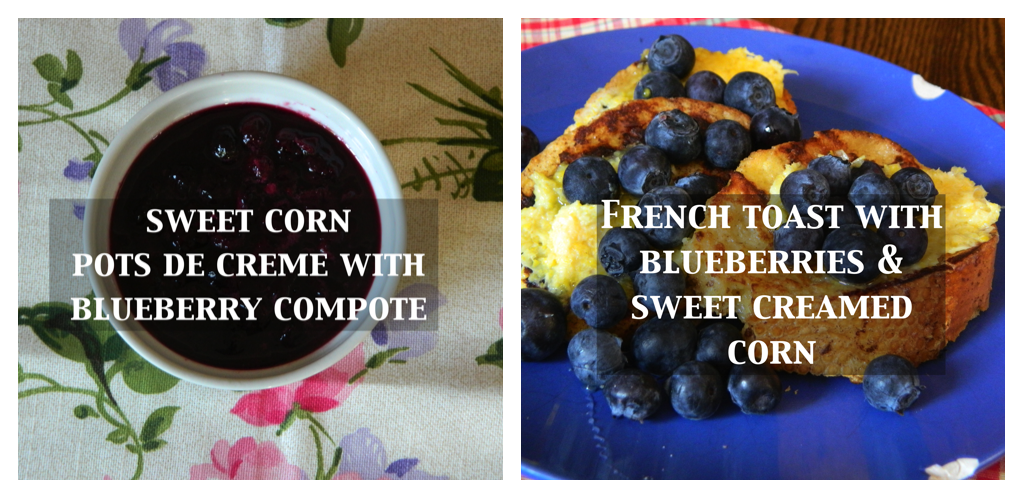Happy Boy Farms returned to Mission Community Market two weeks ago, bringing their bags of lettuce, buckets of tomatoes, and fresh stance on organic produce with them. The farm is remarkable because of its variety––in the summertime, Happy Boy sells from over 200 acres worth of production. These acres vary in climate and geography; because the farm grows on multiple fields in multiple counties, some of Happy Boy’s fields are hot and dry, while others get coastal breezes even in the summertime. The result is a a varied landscape for produce.
Working for the farm means variation, too. Iva, a driver with Happy Boy, tells me that drivers “play with a lot of different skill-sets,” including interacting with customers, handling produce, navigating markets, and driving long distances. Happy Boy’s drivers start their journeys from the farms packing sheds, where Happy Boy houses seedlings. Before the drivers even arrive at a market, they start out by checking in on the farm’s teeny plants. That initial interaction fosters an intimate relationship between the drivers and Happy Boy’s crops, beneficial for shoppers browsing at Happy Boy’s stalls.
At their MCM stall, the mounds of tomatoes crowding their front tables are framed by the bunches of herbs and barrels of greens behind them. The stall hosts zucchinis, summer squashes, and bagged salad. A few customers in line are clutching finger-fulls of carrots, and some other are cradling bags of Happy Boy’s heirloom tomatoes. In addition to the vegetables, basil and fennel leaves are fanned out on Happy Boy’s tables. While most are likely familiar with basil, fennel’s bulbous white bottom and sprawling top is alien to many shoppers. Fennel has a taste similar to licorice and anise, though it is described as sweeter.
“I’m a really big fennel fan,” Iva tells me. “I feel like every year I work farmer’s markets people get more and more excited about fennel.” Iva suggests getting the most out of fennel by using the stems in pesto. Other recipe suggestions include caramelizing fennel in a salad, baking it with fish, or incorporating the seeds into biscuits.
During the summertime, Happy Boy has San Marzano, Earl Girl, cherry, and heirloom tomatoes. Iva’s favorites are the purple heirlooms, which she suggests slicing and placing on top of a cooked dish, dicing for salsa, or eating them on their own for a snack. Earlygirl tomatoes are often prepared with mozzarella and basil, and San Marzanos make excellent sauces.
After customers have come and picked through Happy Boy’s stalls, the farm donates all of its leftover produce. “Personally, one of my favorite things is knowing that everything we have is going to be eaten and enjoyed,” Iva says.
“Personally, one of my favorite things is knowing that everything we have is going to be eaten and enjoyed.”
At MCM, Iva notes, Happy Boy’s customers are variable. And though everyone living in The Mission District is aware of the changes the area has been going through, Iva says that she believes the market has stayed true to the heart and culture of the Mission. “I love the mission,” she says, “and the market is something that feels like it could really build a community. I like the size of it; it feels like people are wandering through.”
“I love the mission, and the market is something that feels like it could really build a community.”
“I love being outside, I love interacting with people––I love people who come from outside California who are surprised by whats possible,” Iva says. “One of the best things is when people are excited when new things come in.”



